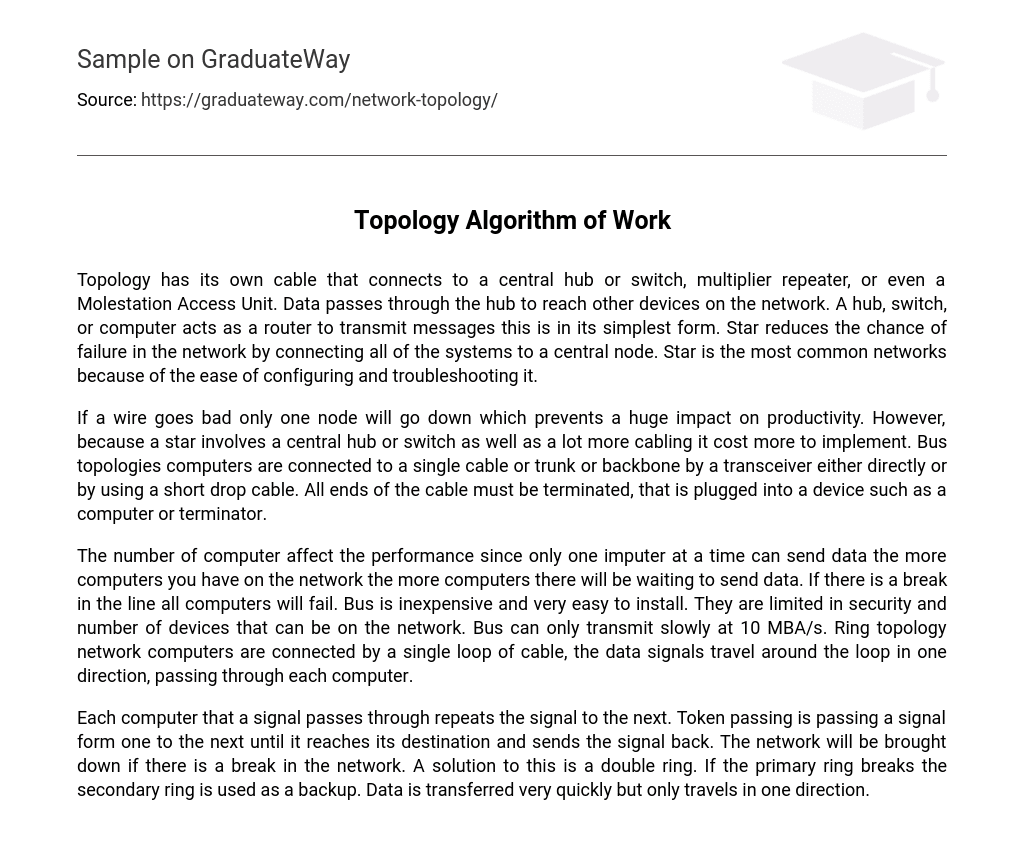Topology has its own cable that connects to a central hub or switch, multiplier repeater, or even a Molestation Access Unit. Data passes through the hub to reach other devices on the network. A hub, switch, or computer acts as a router to transmit messages this is in its simplest form. Star reduces the chance of failure in the network by connecting all of the systems to a central node. Star is the most common networks because of the ease of configuring and troubleshooting it.
If a wire goes bad only one node will go down which prevents a huge impact on productivity. However, because a star involves a central hub or switch as well as a lot more cabling it cost more to implement. Bus topologies computers are connected to a single cable or trunk or backbone by a transceiver either directly or by using a short drop cable. All ends of the cable must be terminated, that is plugged into a device such as a computer or terminator.
The number of computer affect the performance since only one imputer at a time can send data the more computers you have on the network the more computers there will be waiting to send data. If there is a break in the line all computers will fail. Bus is inexpensive and very easy to install. They are limited in security and number of devices that can be on the network. Bus can only transmit slowly at 10 MBA/s. Ring topology network computers are connected by a single loop of cable, the data signals travel around the loop in one direction, passing through each computer.
Each computer that a signal passes through repeats the signal to the next. Token passing is passing a signal form one to the next until it reaches its destination and sends the signal back. The network will be brought down if there is a break in the network. A solution to this is a double ring. If the primary ring breaks the secondary ring is used as a backup. Data is transferred very quickly but only travels in one direction.





